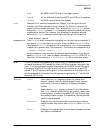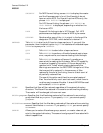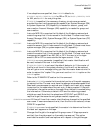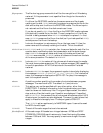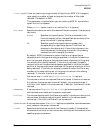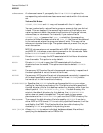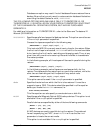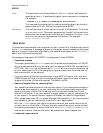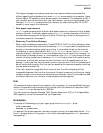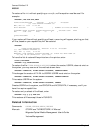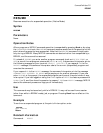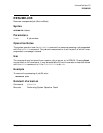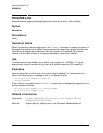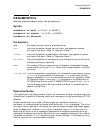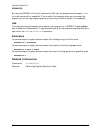
Chapter 6 499
Command Definitions P-R
RESTORE
The system manager and system supervisor may restore lockword-protected files
without specifying the lockword only when RESTORE is executed during a session. Users
without SM or OP capability must always supply the lockword. The exception is AM. If
you have AM and you are working in your own account, you do not have to supply the
lockword. If RESTORE is executed as a job, however, all users lacking SM, OP, or AM
capability must supply file lockwords.
• Disk space requirements
RESTORE determines whether sufficient disk space remains to restore a file that already
exists on the disk. If sufficient space remains, RESTORE writes a new copy of the file to
the disk before purging the old copy of the file. The old copy of the file is purged only if
the restore operation is successful.
• Restoring True-Online Backups
When restoring backups created with TurboSTORE/iX 7x24 True-Online Backup, when
the sync point occurred at the end of the backup, RESTORE must read the complete store
directory information before restoring any files. If a store disk directory file exists for
this backup, or one is specified with the STOREDIRECTORY option, then RESTORE can
read the directory information from this file before starting to restore files. However, if a
disk directory file does not exist, or is not specified, then RESTORE may prompt the user
to mount the last media from the backup. RESTORE will skip to the final media directory
information, and then will prompt the user to mount the first needed media for the
backup. If you know that you are restoring from a sync at end True-Online backup and
do not have a disk directory file, then you can speed up the restore process by mounting
the last piece of media first.
Files that have after image data from a sync-at-end True-Online backup will be
inaccessible between the time that the normal file data is restored, and the after image
log data is read in from the end of the backup and restored. You will not be able to read
or modify these files until the after image log data has been applied.
Use
This command may be issued from a session, job, or program. If you press [Break] during a
restore, the operation continues while you interact with the Command Interpreter. Both
ABORT and RESUME can be used within BREAK.
The user must have System Manager (SM), System Supervisor (OP), or Privileged Mode
(PM) capability to use this command for privileged files.
Examples
To restore all files belonging to your logon group from the restorefile T, enter:
:FILE T;DEV=TAPE
:RESTORE *T;@;KEEP;SHOW
In response, the system operator receives a request to mount the tape identified as T. If a
file on T already exists in the system, it will not be restored because the KEEP parameter
was specified.



